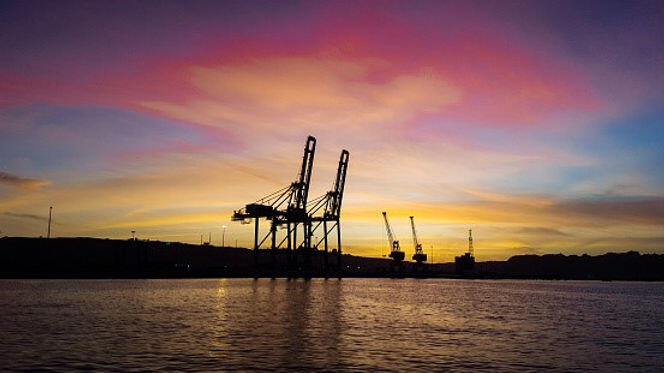Abstract: The China-Pakistan Economic Corridor (CPEC) has added an economic layer to the already diplomatically and politically strong ‘friendship’ between China and Pakistan. Owing to security concerns from India over territorial disputes, the larger threat of terrorism, Pakistan’s weakening economy and ties with Washington, CPEC, while not economically as viable, does extend greater political benefits to both the states.
Bottom-line up-front: The relationship between the two neighbours has remained diplomatically sound and strategically vital over the years. The CPEC Project reflects these political considerations more than the economic benefits it has to offer.
Problem statement: How does the China-Pakistan Economic Corridor reflect on the greater political dynamics between the two states?
So what?: China’s flagship CPEC Project reflects China’s aims and ambitions with the great BRI and its strategy of geo-positional balancing. It also reflects the significance of alliance with Pakistan and China’s greater aim to strengthen its influence regionally and globally through economic investments.

Source: www.iStock.com/Aleem_khan
India as a Unifying Factor
The China-Pakistan Economic Corridor (CPEC) is the flagship project of China’s greater Belt and Road Initiative (BRI) – the economic and infrastructure project that aims to connect Asia and Europe all the way to Africa and, by extension, solidify China’s regional and global reach.[1] Pakistan and China are often described as ‘all-weather’ friends, owing to their strong diplomatic relations ever since Pakistan’s independence in 1947; their initial political, military, and now economic cooperations have much deeper roots.
Pakistan and China, otherwise miles apart in ideology, language, culture and history, were brought together due to their mutual security concern over territorial disputes with neighbouring India.[2] Pakistan suffered three debilitating wars with India over the disputed territory of Jammu and Kashmir whereas China went to war with India in 1962 over the territorial disputes in the Ladakh region.[3] Both Pakistan and China continued to routinely experience skirmishes on their shared border with India contributing to the security concerns of both states. In order to balance the power in the region against India, Pakistan and China allied together over military and political considerations, particularly to keep their common adversary at bay.[4] In the 1970s, China actively supported Pakistan’s nuclear program and strengthened its alliance with Islamabad, much to India and also United States’ displeasure.[5] Over the years, as Pakistan’s relationship with the United States deteriorated – first over the issue of nuclear proliferation, then over Pakistan’s covert support for terrorist groups during the War on Terror – Pakistan also considered deepening ties with China as an alternative to its alliance with the United States.
In the 1970s, China actively supported Pakistan’s nuclear program and strengthened its alliance with Islamabad, much to India and also United States’ displeasure.
An Economic Corridor with Challenges
In April 2015, China and Pakistan signed an agreement for US$46 billion of investment under the China-Pakistan Economic Corridor (CPEC) Project, a sum which was later increased to US$62 billion.[6] Pakistan’s dwindling economy welcomed the Chinese investments for power and infrastructure development projects. The railway project from Peshawar to Karachi, a new coal-fired power plant, hydroelectric power plant projects in Kashmir, the metro system in Lahore, the building of special economic zones across the country and fiber-optic cables running from China to Pakistan – all of these projects aimed to aid Pakistan’s stagnant infrastructure, enhance connectivity, boost economic growth and create job opportunities.[7] The mega-projects under CPEC were also expected to help China’s state-owned enterprise overcome the challenge of overcapacity and oversupply by providing alternative markets outside of China.[8] Additionally, a successful run of CPEC was crucial to showcase the potential of the greater BRI projects spread across other countries.
A major segment of CPEC included the development of infrastructure and pipeline networks from Pakistan’s Gwadar Port situated in Baluchistan Province to China’s Xinjiang Province.[9]
The project was supposed to serve as a land-based alternative to the maritime-based ‘chokepoint’ of the Straits of Malacca for China and increase economic activity in Pakistan.[10] However, it is critical to note that cheaper, alternative sea routes exist for the ‘Malacca Dilemma’ and while Gawadar Port offers geostrategic benefit due to its close proximity to Oman, United Arab Emirates, and Iran, the Port has severely limited capacity, insufficient in fulfilling the economic and transportation needs of China.[11] The Gwadar Port Authority website reveals that it only has three functioning multipurpose berths with the capacity to accept vessels of up to 50,000 dead-weight tonnages (DWT).[12] Furthermore, the construction of a pipeline project from Gwadar to China would include construction along the high altitudes of the Himalayas that are also subject to landslides.[13] This would require additional heating and insulating equipment costs and, given the region’s topography, look increasingly unrealistic to execute.[14]
If the Gawadar project – central to the greater CPEC project – serves limited economic value to China and faces considerable logistical constrains, why is it allowed to go further at all? While the economic benefits may seem limited for China, a deeper investment in strengthening the ties with Pakistan will likely serve China’s greater political and security interests.[15] First, a successful run of CPEC will also showcase the immense potential of BRI that China hopes to install in other countries across continents. Solidifying ties with Pakistan through debt-based investment is reflective of China’s ‘geo-positional balancing’ tactic of “putting down marker ‘stones’ in key geographical positions for potential future use and as a hedge against possible conflicts”.[16] This is evident from the fact that a deepened alliance due to economic ties is likely to ensure Pakistan’s support for China in face of growing security concerns from India; and vice versa.[17] Second, the in-pour of investment and economic support from China also means that now Islamabad is not under pressure to pursue policy directives from Washington; the Pakistan-US alliance has been at its lowest ebb in recent years due to friction over foreign and security policies.[18] Third, China hopes to achieve stability and peace in Pakistan through economic development which may, in turn, ensure stability for its Xinjiang Province – bordering Pakistan and Afghanistan and harbouring separatist and extremist sentiments much to Beijing’s concern.[19] Lastly, the energy and infrastructure development projects under CPEC also benefit domestic politics especially of the successive governments – Pakistan Muslim League Nawaz in 2013 and Pakistan Tehreek-e-Insaaf in 2018 – both of who promised their vote bank prosperity through economic and infrastructure development but have been unable to deliver on their own due to insufficient resources and corruption in the bureaucracy.[20]
While the economic benefits may seem limited for China, a deeper investment in strengthening the ties with Pakistan will likely serve China’s greater political and security interests.
However, the development and construction of the Gawadar Port and other projects under CPEC have faced considerable hindrances and lags over the years. Himalayas unfavourable topography has created logistical concerns and the Baluch separatist movement in Baluchistan has created security concerns for Chinese workers in Gwadar as the Baluch view the Chinese footprint as exploitation of Baluchistan for its resources.[21] Terrorist concerns have stifled projects under CPEC elsewhere in the country as well.[22] Although Pakistan has invested in increasing the security along the Gwadar Port and across the country, which has incurred additional costs, the security situation has not improved much, and Chinese nationals continue to be targeted.[23]
“Debt-Trap Diplomacy”
One major criticism of this initiative is the Chinese ‘debt-trap diplomacy’, which accuses China of funding major infrastructure projects in developing nations through unsustainable loans. When the countries are unable to pay, it gives China economic and political leverage over them.[24] The International Monetary Fund (IMF) has echoed similar concerns for Pakistan over CPEC, contributing to a widening current-account deficit in Pakistan, prompting Pakistan to turn to IMF for further loans.[25] The Chinese debt-based model has led Pakistan to take additional loans and the increasing debt, which is likely to create a domestic economic imbalance and could also potentially strain relations between the two countries in the future, should Pakistan find itself unable to repay.[26]
The International Monetary Fund has echoed similar concerns for Pakistan over CPEC, contributing to a widening current-account deficit in Pakistan, prompting Pakistan to turn to IMF for further loans.
The CPEC project may not yield flourishing economic benefits for China but does help in solidifying its alliance with Pakistan – and its political and military support against Indian aggression – and showcasing to the world how it aims to strengthen its regional and global might through the greater BRI projects. While CPEC shows immediate benefits of relieving pressure from pursuing the U.S. dictated policies in exchange for economic aid and helps in bringing short-term economic benefit to the country through the projects, the debt-based investment may not bode well for Pakistan’s economic health in the long run.
Mariam Qureshi is an MA International Affairs student concentrating in Espionage and Surveillance at the Defence Studies Department at King’s College London. She received her BA (Honours) in Political Science from Kinnaird College for Women, Lahore, Pakistan. She is also an Editor at the International Team for the Study of Security (ITSS) Verona. The views contained in this article are the author’s alone.
[1] Jeremy Garlick, (2020), “The Regional Impacts of China’s Belt and Road Initiative,” Journal of Current Chinese Affairs, 49(1), 3-13.
[2] Andrew Small (2015), The China-Pakistan Axis: Asa’s New Geopolitics. London: Hurst and Company, 177.
[3] Pulkit Mohan (May 2020) “Is India Equipped to Counter the Growing China-Pakistan Nexus?” South Asian Voices, https://southasianvoices.org/is-india-equipped-to-counter-the-growing-china-pakistan-nexus/.
[4] Maria Qaddos, (2020) “The Pakistan, India and China Triangle” Indo-Pacific Perspectives, Air University, (3) 10: 10-14, https://www.airuniversity.af.edu/Portals/10/JIPA/IndoPacificPerspectives/June%202021/03%20Qaddos.pdf.
[5] Idem.
[6] Jeremy Garlick, (2018) “Deconstructing the China-Pakistan Economic Corridor: Pipe Dreams Versus Geopolitical Realities,” Journal of Contemporary China, 27(112), 519-533.
[7] David Sacks, “The China-Pakistan Economic Corridor – Hard Reality Greets BRI’s Signature Initiative” Council for Foreign Relations (March 2021), https://www.cfr.org/blog/china-pakistan-economic-corridor-hard-reality-greets-bris-signature-initiative.
[8] Arif Rafiq, “China’s $62 Billion Bet on Pakistan” Foreign Affairs (October 2017), https://www.foreignaffairs.com/articles/china/2017-10-24/chinas-62-billion-bet-pakistan.
[9] Jeremy Garlick, “Deconstructing,” 530.
[10] Idem.
[11] Idem.
[12] Gwadar Port Authority, http://www.gwadarport.gov.pk/portprofile.aspx.
[13] Jeremy Garlick, “Deconstructing,” 524.
[14] Idem.
[15] Shi Zhiqin and Lu Yang (2016), “The Benefits and Risks of the China-Pakistan Economic Corridor,” Carnegie Endowment for International Peace, https://carnegieendowment.org/2016/12/21/benefits-and-risks-of-china-pakistan-economic-corridor-pub-66507.
[16] Idem.
[17] Idem.
[18] Reuters (September 14, 2021), “Blinken says US will assess Pakistan ties over Afghanistan’ future,” Dawn, https://www.dawn.com/news/1646326.
[19] Idem.
[20] Yousaf Ali, et al. (2019) “Economic viability of foreign investment in railways: a case study of the China-Pakistan Economic Corridor (CPEC),” The Engineering Economist, 1-18.
[21] Kamran Yousaf (July 2021) “New Security Plan to cover ‘all Chinese workers,” The Tribune, https://tribune.com.pk/story/2312133/new-security-plan-to-cover-all-chinese-workers.
[22] Idem.
[23] Idem.
[24] Yu Jie and Jon Wallace, “What is China’s Belt and Road Initiative?,” Chatham House (September 2021), https://www.chathamhouse.org/2021/09/what-chinas-belt-and-road-initiative-bri.
[25] Sacks, “BRI’s Signature Initiative”.
[26] Jeremy Garlick, “Deconstructing,” 530.






